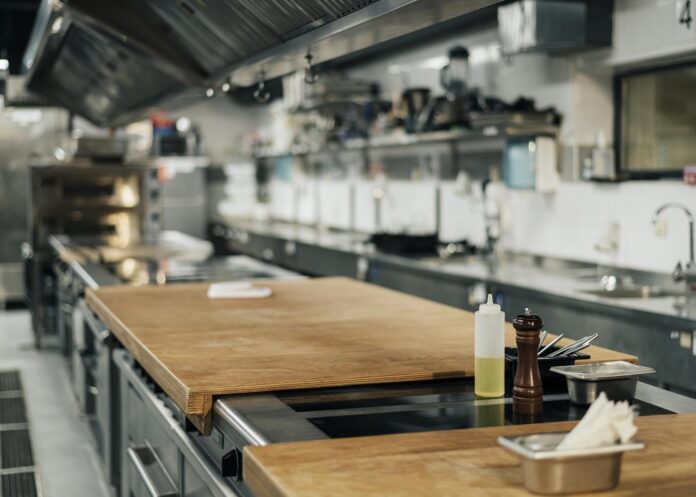The online food delivery market has grown up to become a big trend in the F&B industry, while Cloud Kitchen is a Gold Rush, especially post-COVID-19 times. According to statista, the Online Food Delivery market is expected to generate US$0.77tn in revenue in 2022.
If we talk about the Global Cloud Kitchen market, it was valued at USD 63 Billion in 2021, while the projection shows that the market will continue to grow with a CAGR of 22% from 2022 to 2030. So, if you are considering starting this business, you have made the best choice. But have you drawn the road map? No…? Then you need to do it now. And this article will help you with the challenges associated with starting Ghost or Cloud Kitchen. We also have suggested solutions for the challenges. Let’s explore;
#1: Setting Proper Operations
The most prominent error managers make is disregarding SOPs (standard operating procedure). Being virtual in nature, the success of a cloud kitchen business depends on operation procedures. Therefore, ignoring SOPs will lead to poor management. In addition, it will impact food delivery.
The solution to these challenges could be many, though you can take expert help to personalize it and make operation procedures more effective and efficient. First, it is essential to centralize the delivery operation and manage it from a single place. You can keep track of the delivery procedures when you manage this from a single spot. You may need to invest in an online food ordering and delivery system and integrate it into your business.
#2: Deciding Food Cost
When it comes to managing a delivery-only restaurant business, deciding the food cost is one of the biggest challenges. Almost every Cloud Kitchen owner goes through this dilemma. Ending up with inflated food costs, influencing the type, quantity, and quality of foods are inevitable. But, unfortunately, it will make things worse in some scenarios.
To short out this challenge, you must understand how to setup cloud kitchen business. Because you need to understand the significance of a standard food cost system and how investing in a robust POS system can help you mitigate the issue. A powerful PoS system enables you to track inventory (opening and closing stocks), keep records of every sale and provide analytical data so you can optimize cost after identifying hidden costs.
#3: Keeping Up With Technological Costs
It’s only possible for Cloud Kitchen to operate with a food ordering system. Even you cannot compromise on the features. You need to ensure that the software is lashed with all the required features, such as online food ordering, delivery network, inventory management, customer application, and more. It could be expensive to manage and maintain these features.
Investing in a single platform is recommended instead of going individually for each requirement. For example, you can purchase a SaaS-based online food ordering system that encapsulates all the features required to operate your cloud kitchen business. Significantly, the system is not restricted to cloud kitchens only; it can efficiently help manage restaurants with on-premise dine-in facilities.
#4: Inconsistency
Cloud kitchen is the highest-grossing business, and that also makes the industry the most competitive one. As we have already given the market trends for cloud kitchens, it will be perpetually growing for years to come. Now, the challenge you might face is that almost all restaurants have started offering online food delivery services and dine-in facilities. So, for ghost kitchen owners, maintaining consistency in terms of quality standards and operational standards will be a considerable challenge.
One thing that can help you mitigate this challenge is to stay intact with the standard delivery procedures. For example, you need to ensure you offer quality food and there’s no compromise on faster delivery service.
#5: Poor Financial Planning
Even though starting a cloud kitchen business is less expensive than opening a typical restaurant, the odds of success are slim without careful financial planning. One of the most significant errors businesses frequently make is underestimating the working capital they need to run a cloud kitchen restaurant.
The largest obstacle in the cloud kitchen industry is not the high initial expenses but rather the considerable financial assistance needed to scale operations and increase market share. Consider writing a thorough business strategy and allocating a certain amount of working capital to pay the necessary expenses. Additionally, make a contingency plan to set aside money for unforeseen circumstances.
#6: Lack of Customer Interaction
An in-house eating arrangement is an excellent way to accommodate customer complaints and needs. Unfortunately, online food services have a communication latency with their customers. As a result, there are complaints and customer unhappiness, which leads to a lack of customers and a bad reputation. To incorporate consumers’ needs and feedback into their operations, cloud restaurants must discover practical ways to interact with them.
Since the website and applications are the primary channels through which orders are received, cloud kitchens should invest more in them. For example, some delivery management systems, like Foodiv, offer SaaS-based for their clients, giving them the ability to interact with clients and keep them informed about the progress of their orders. Additionally, real-time order tracking is available to clients. These characteristics increase customer confidence and encourage them to place repeat orders.
#7: Improper Hygiene and Working Conditions
Hygiene is given less priority when enforcement and monitoring by authorities in cloud kitchens are relaxed. As a result, some cloud restaurants compromise on cleanliness and hygiene because patrons cannot see the working conditions of the kitchen and staff. Costs and effort are reduced as a result. However, lousy hygiene tends to appear and affect the meal’s quality, and numerous cloud kitchens have received legal complaints because of the subpar food they provide.
According to reports, more than 63% of customers think cleanliness is crucial to the meal delivery procedure; by making sure that the crew is wearing protective gear and that the workspace and storage area are regularly cleaned and germ-free, hygiene must be maintained. Verifying that the delivery team and the merchandise comply with these requirements is also necessary. This can be made sure of by hiring a manager to oversee the department and installing cameras to monitor the operations.
Final Thoughts
When it comes to establishing a cloud kitchen, you need to sketch out a plan and find out how to set up a cloud kitchen. Then, if required, connect with an expert who can guide you build the perfect ghost kitchen that never fails. However, keep these challenges in mind if you are already in this business. Then, you can make plans and prepare for the future.















